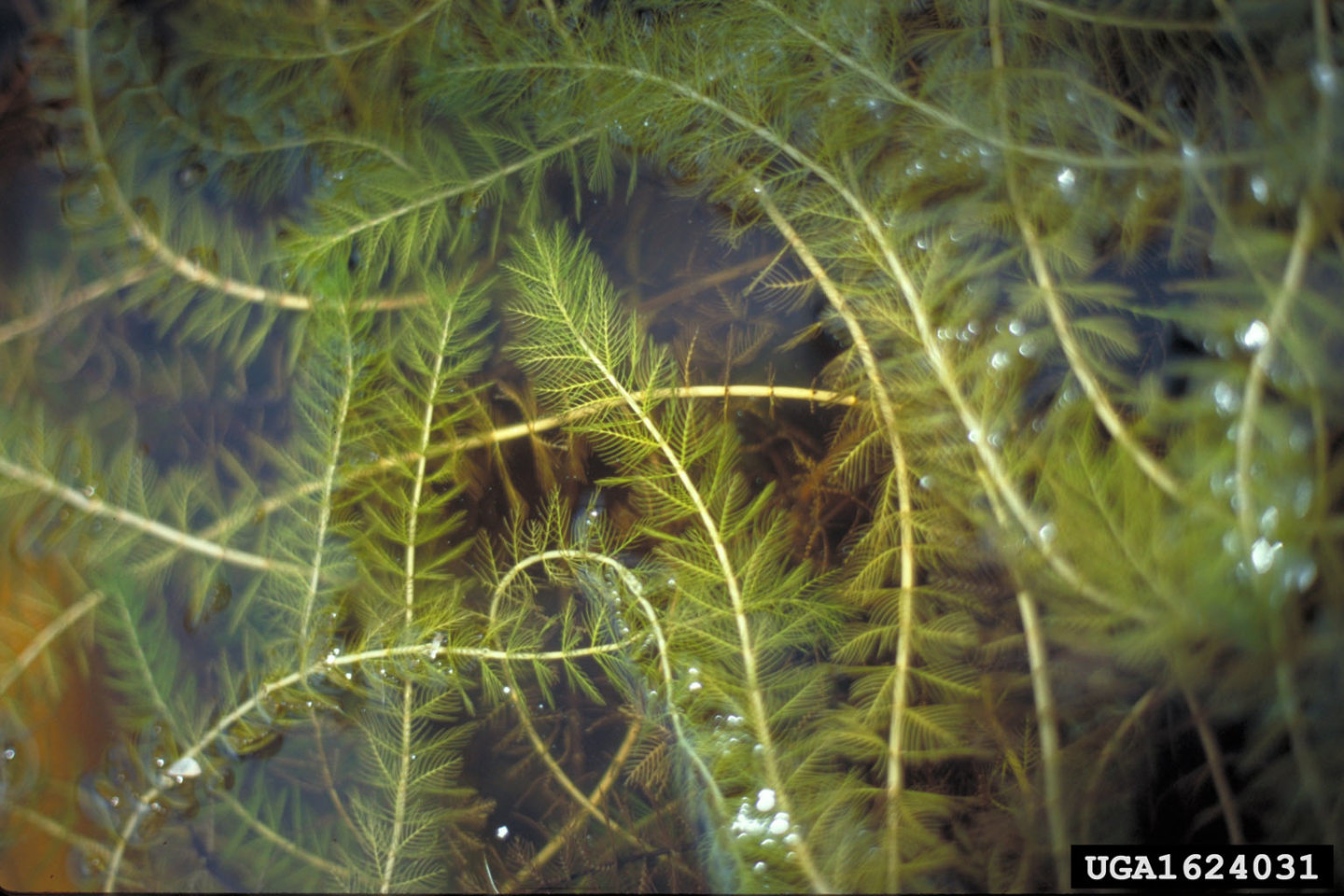Myriophyllum spicatum
Description
- Native to Europe, Asia, and Africa.
- Spreads by seeds, rhizomes, and stem fragmentation.
- Grows in still or slow moving water, prefers areas with human disturbance.
- Discovered in Okanagan Lake in 1970. By 1974, it had spread to all major water bodies in the Okanagan, Thompson/Okanagan, Central Kootenay, East Kootenay, Lower Mainland and Coastal regions.
- Can grow to 10m tall.
- May have red flowering spikes that contain small yellow flowers with four pedals.
Consequences of invasion
- Forms thick underwater stands that interfere with recreational activities such as swimming, fishing, and boating.
- Clogs waterways such as irrigation ditches and drainage canals, adding to maintenance costs.
- Outcompetes local species, reducing biodiversity.
- Creates stagnant waters, which can become breeding areas for mosquitoes.
Status in the CKISS region
- Eurasian water milfoil is currently classified as Contain in the CKISS region.
- The goal is to contain currently infested areas and to not allow further spread.
- If you find this species outside of currently infested areas in our region, please report it.
- To learn more about how CKISS classifies and manages invasive species, see our Invasive Species Priority Lists page.
Integrated pest management options
- Prevention: Avoid infested areas as much as possible. Clean, drain, and dry your watercraft before leaving any water body.
- Mechanical: Can be removed by hand or with machines, but is not recommended due to the risk of spreading stem fragments. All landfills within the RDCK and RDKB accept invasive plant species for free. Ensure your material is bagged in clear plastic bags and notify the attendant that you have invasive plant species. Plants must be identifiable through the bag. For more information please see the RDCK Resource Recovery Bylaw
- Biocontrol: While a number of native insects can help contain Eurasian water milfoil, no single species is known to make enough of a differenced to be useful as a biocontrol agent.
- Chemical Control: No available options in British Columbia


